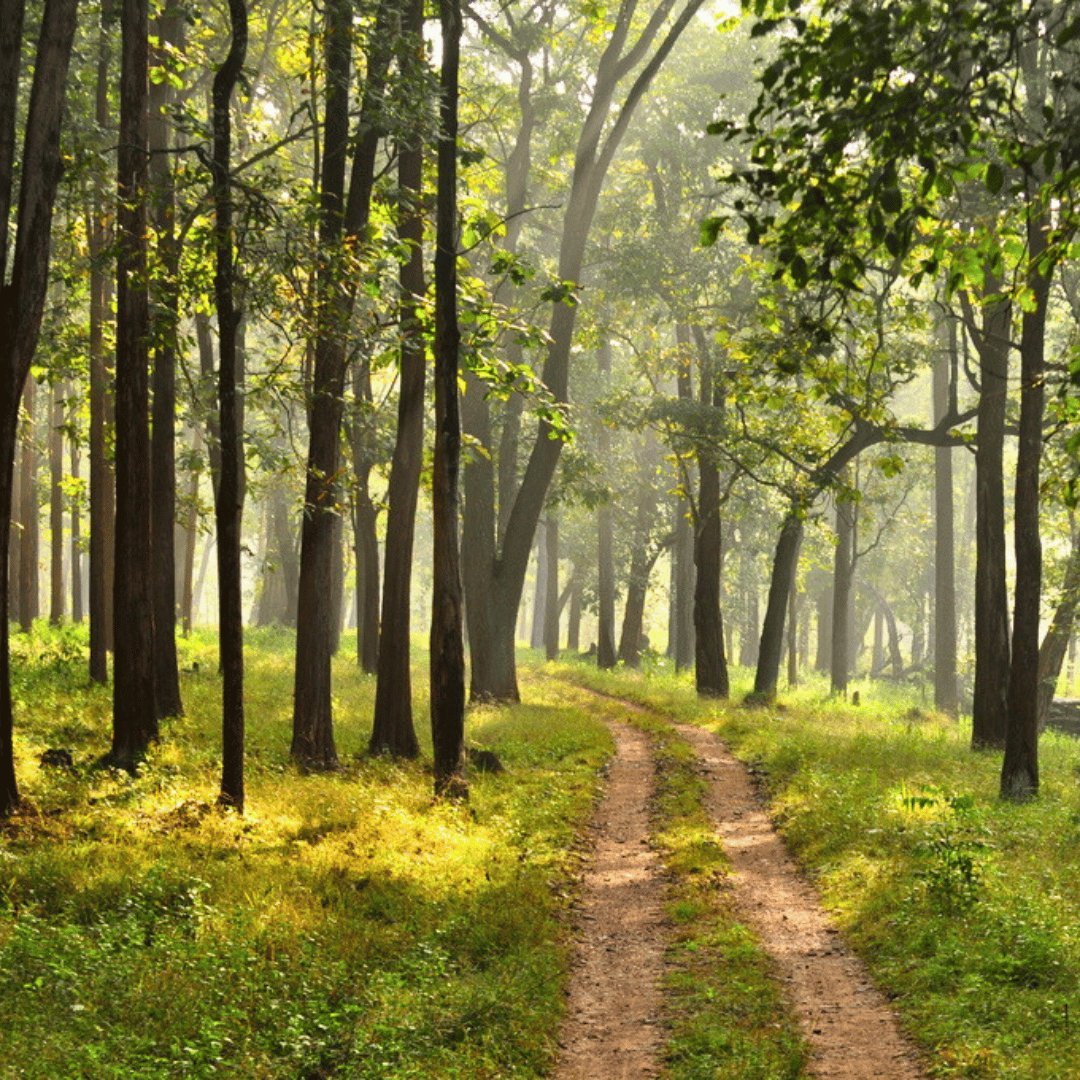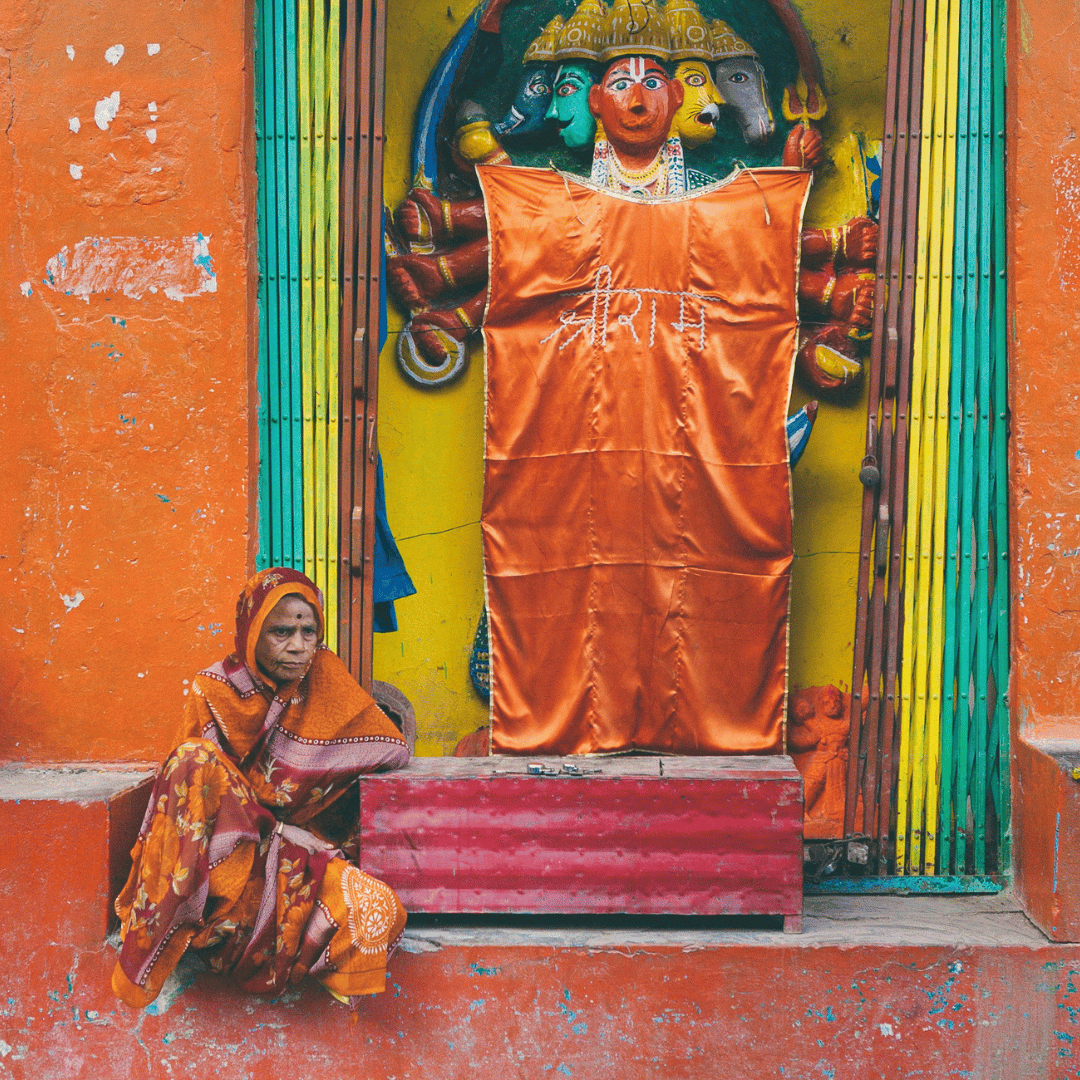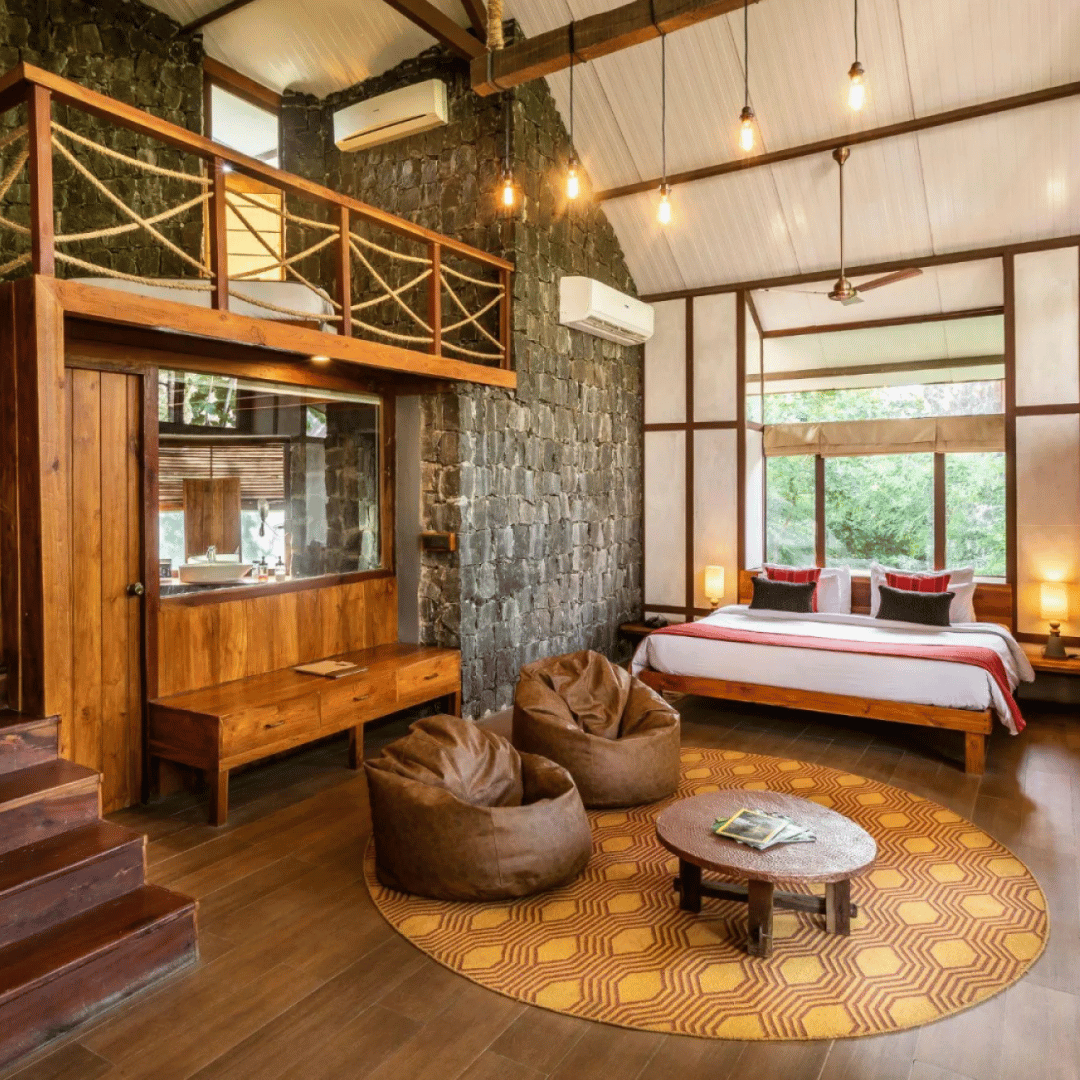
Private Central India Tours
Bespoke Packages Crafted With Care
Central India is a region where wildlife reserves, sacred temples and forgotten kingdoms converge to tell India’s ancient story. From the carved temples of Khajuraho and the Buddhist sites of Sanchi to the palaces and riverside ghats of Maheshwar and Orchha, it reveals layers of art, faith and history. Kanha and Pench National Parks offer some of India’s best wildlife experiences, while Chanderi and Mandu echo medieval craftsmanship and architectural beauty. The region also connects naturally into Varanasi and Rajasthan for extended cultural routes.
Custom Central India tours with India Unbound are privately designed to balance heritage and wilderness, with expert guides, private drivers and boutique stays. Based in Melbourne and creating private India journeys since 2007, we design flexible and memorable adventures for Australian travellers seeking authentic encounters across one of India’s most distinctive regions.
Choose Your Central India Travel Style
Central India Travel Advice For First Time Visitors
-
Central India is often described as the cultural and geographical core of the country. It encompasses the states of Madhya Pradesh, Chhattisgarh, and parts of Maharashtra and Jharkhand. Travelling here offers a glimpse into India’s timeless landscapes, where ancient rock art, tribal villages, and grand palace cities sit alongside some of the country’s best wildlife sanctuaries. Life moves at a measured pace, and visitors will find that the rhythm of local life is more traditional than in the major urban centres.
Wi-Fi is available in most hotels, cafes and airports, though it can be slow or inconsistent outside the main cities. Many travellers prefer to stay connected by purchasing a local SIM card upon arrival. The leading network providers, Airtel and Jio, offer good coverage across much of Madhya Pradesh and Maharashtra, while BSNL still operates in more remote areas. You will need to show your passport and visa copy when purchasing a SIM card. Connections usually activate within a few hours. In wildlife parks and rural areas, expect limited reception and make offline arrangements in advance if you rely on navigation or communication apps.
Culturally, Central India places great importance on respect, humility and social awareness. Greeting people with “namaste” and a small bow of the head is considered courteous. Remove your shoes before entering homes, temples and some shops. Public displays of affection are rare and generally frowned upon. When handing over money or gifts, always use your right hand or both hands, as the left is considered unclean for social exchanges.
Photography etiquette matters too. Always ask before photographing local people, particularly in tribal regions where villagers may be uncomfortable being photographed without consent. When visiting temples or shrines, avoid touching statues, and follow local cues about where you may stand or sit. Women should dress modestly in religious and rural settings, covering shoulders and knees, while men are expected to dress neatly.
Hospitality in Central India is generous, and small gestures of respect are remembered. Accepting tea or food offered by your hosts, listening to local stories, and showing curiosity about regional traditions can lead to genuine connections. Travelling here is not just about seeing monuments or wildlife, but about understanding the rhythm of everyday life that continues much as it has for centuries.
-
Central India sits quite literally in the middle of the country and is often described as the heart of the Indian subcontinent. It is not a formal administrative region, but a cultural and geographical one that connects the north and south, east and west. The two states most closely associated with Central India are Madhya Pradesh and Chhattisgarh, though parts of Maharashtra, Jharkhand and even eastern Uttar Pradesh are sometimes included depending on the context. Together, these states form a vast region characterised by forests, rivers, ancient cities and a deep sense of heritage.
Madhya Pradesh is the largest and most recognised part of Central India. Known as the “Heart of India,” it lies at the country’s geographic centre and showcases an extraordinary range of historical and natural sites. From the medieval palaces of Gwalior and Orchha to the temples of Khajuraho and the Buddhist remains of Sanchi, the state captures India’s long continuum of culture. Its national parks - Kanha, Bandhavgarh, Pench and Satpura - are among the best places in the country to see tigers and other wildlife. The terrain varies from rolling hills and plateaus to fertile plains nourished by the Narmada and Betwa rivers.
Chhattisgarh, once part of Madhya Pradesh until it became a separate state in 2000, is less visited but richly rewarding. Much of it remains covered in dense forest and inhabited by indigenous tribal communities whose traditions have been preserved over generations. The Bastar region is known for its colourful markets, tribal art and festivals such as Bastar Dussehra, which is celebrated with elaborate rituals and processions. Waterfalls like Chitrakote and Tirathgarh add to the state’s natural beauty, while the capital city, Raipur, serves as the main gateway for travellers.
Parts of Maharashtra, particularly around Nagpur, are sometimes grouped into Central India due to their close cultural and geographic proximity. Nagpur itself lies near India’s geographic centre and serves as a key transport hub linking north and south. Similarly, parts of eastern Uttar Pradesh, including the sacred city of Varanasi, share strong cultural and linguistic ties with Central India. As one of the oldest continuously inhabited cities in the world, Varanasi connects the spiritual and historical dimensions of northern India with the cultural fabric of the central plains. Southern Jharkhand also blends into this zone, adding another layer of linguistic and tribal diversity.
Together, these states embody the depth and diversity of India’s interior - from wildlife and tribal traditions to centuries-old architecture, spirituality and rural life that remains largely untouched by mass tourism. Travelling through Central India reveals a side of the country that feels both ancient and alive, a place where nature, faith and culture continue to coexist in a way that few other regions can match.
-
Central India is linguistically diverse, reflecting centuries of migration, cultural exchange and local evolution. The most widely spoken language across the region is Hindi, used in both formal and everyday communication in Madhya Pradesh and Chhattisgarh. It serves as the primary language for administration, education and media, and most people you encounter in towns and tourist areas will understand at least basic Hindi.
Alongside Hindi, numerous regional dialects and languages shape the cultural landscape. In Madhya Pradesh, dialects such as Malvi, Bundeli and Bagheli are commonly heard in different parts of the state. Malvi is spoken around Ujjain and Indore, Bundeli dominates the northern regions around Orchha and Chhatarpur, and Bagheli is common in the eastern districts near Rewa. These dialects share similarities with Hindi but have distinct vocabularies, pronunciations and expressions rooted in local traditions.
In Chhattisgarh, the local language is Chhattisgarhi, which is closely related to Hindi but recognised as a separate linguistic identity. It reflects the rhythm of daily rural life and carries strong folk traditions through storytelling, song and theatre. Tribal languages such as Gondi, Halbi and Kurukh are also widely spoken in the forested regions of Bastar and other parts of southern Chhattisgarh, especially among Adivasi (indigenous) communities.
English is widely used in hotels, tourism and business, though less so in rural areas. Guides, drivers and accommodation staff in popular destinations usually have a working knowledge of English. Travellers who learn a few words of Hindi or greet people with “namaste” are often met with warmth and appreciation.
-
The best time to visit Central India is generally from October to March, when the weather is mild and the countryside is at its most inviting. During these months, temperatures are comfortable for sightseeing, wildlife safaris and exploring cities or rural areas. This period follows the monsoon, so the forests are lush, rivers are full, and the landscape takes on a rich green hue that enhances the region’s natural beauty.
From October to early December, the air is fresh and the scenery vibrant. This is an ideal time for visiting heritage sites such as Khajuraho, Orchha and Sanchi, or for exploring towns like Bhopal and Gwalior. Wildlife viewing also improves as national parks reopen after the monsoon, and the cooler temperatures make morning and evening safaris more comfortable.
January and February are cooler still, particularly in the northern plateaus of Madhya Pradesh and in higher-altitude regions. These months are perfect for cultural travel, temple visits and exploring smaller towns without the heat. Many local festivals also take place during this season, including tribal celebrations in Chhattisgarh and the colourful Khajuraho Dance Festival in February.
By March, the landscape begins to dry, and wildlife viewing becomes exceptional. Animals gather around remaining water sources, and sightings of tigers, leopards and other species in parks like Kanha, Bandhavgarh and Pench are at their peak. This transition from winter to summer offers clear skies and good light for photography.
Travelling outside these months, particularly between April and June, can be challenging due to rising temperatures, often exceeding 40°C in some areas. The monsoon season, from late June to September, brings heavy rainfall, making some rural roads difficult to access. However, the rain transforms the forests and farmlands into lush, green landscapes that appeal to travellers seeking a quieter, more atmospheric experience.
-
In Central India, dressing with modesty and practicality in mind is important, as the region is culturally traditional and experiences a mix of urban and rural settings. Lightweight, comfortable clothing made from natural fabrics like cotton or linen works best for most of the year, especially given the warm climate outside the winter months.
For everyday travel, trousers or long skirts paired with shirts, blouses or tunics are suitable. Locals dress conservatively, so keeping shoulders and knees covered is both respectful and practical. In cities like Bhopal or Indore, attire can be slightly more modern, but in smaller towns and villages modest clothing is still preferred. Female travellers often find loose-fitting garments such as kurtas with leggings or wide trousers both comfortable and culturally appropriate.
When visiting temples, mosques or other religious sites, it’s customary to remove your shoes before entering. Clothing should cover shoulders, arms and legs, and in some temples women may be asked to cover their heads with a scarf. Carrying a light shawl or scarf is useful for these occasions and can also provide sun protection when outdoors.
In national parks such as Kanha, Bandhavgarh and Pench, neutral-coloured clothing is recommended for safaris to blend in with the environment and avoid disturbing wildlife. Comfortable walking shoes, a hat and a light jacket for early morning or evening drives are practical additions. During winter (November to February), mornings and evenings can be cool, so layering is helpful.
While Central India does not have strict dress codes for visitors, showing sensitivity to local customs leaves a positive impression. Avoid tight or revealing clothes, and dress neatly when interacting with locals or attending cultural performances or festivals. Travellers who dress with respect for tradition often find doors open more easily and encounters with people feel warmer and more genuine.
-
Food in Central India reflects the region’s mix of tribal, rural and royal traditions, shaped by the ingredients that thrive in its forests and farmlands. Dishes are hearty, often cooked slowly over a wood fire, and rely on local grains, pulses, vegetables and aromatic spices rather than heavy cream or oil. Each state and community adds its own touch, making Central Indian cuisine both diverse and deeply rooted in place.
In Madhya Pradesh, the flavours balance between north and south India. Cities like Indore and Bhopal are known for their vibrant street food - try poha jalebi for breakfast, spicy sev usal or bhutte ka kees made from grated corn, and Indore’s famous sarafa bazaar snacks served late into the night. Bhopal’s Mughlai influence shows in dishes such as rogan josh, biryani and sik kabab, while smaller towns favour lentil-based meals like dal bafla, a local variation of Rajasthan’s dal bati churma.
Chhattisgarh’s cuisine is more rustic and influenced by tribal cooking. It uses rice, millets and forest produce like mushrooms, tamarind and leafy greens. Traditional dishes include chana sagra, bafauri (steamed lentil dumplings) and angakar roti (a flatbread made with rice flour). Many meals are vegetarian, though fish and chicken are common in rural areas. Locally brewed drinks such as mahua (made from forest flowers) and salfi (a palm sap beverage) are unique to tribal communities.
If you travel near the Maharashtra border, you’ll find flavours leaning towards Marathi cuisine - think spicy curries, lentil stews like pithla bhakri, and sweets made with jaggery and coconut. In towns like Nagpur, street snacks such as tarri poha and samosa chaat are popular staples.
Fresh produce, grains and locally sourced ingredients are central to daily cooking, and food is often eaten by hand. Most travellers find Central Indian cuisine flavourful but not overly spicy, with plenty of variety for both vegetarians and meat-eaters. Meals are often served with hospitality and pride, offering a true taste of the region’s warmth and tradition.
-
A journey through Central India deserves time, as the region’s highlights are spread across large distances and connected by slower overland routes. Ten days is the minimum recommended to experience a balanced introduction, while two to three weeks allows for a deeper exploration of its national parks, ancient monuments and rural landscapes.
In about ten days you can cover the cultural heart of Madhya Pradesh by visiting the temples of Khajuraho, the riverside palaces of Orchha and the heritage sites of Gwalior or Bhopal. This timeframe also allows for a short wildlife experience in one national park such as Panna or Satpura. Travel between destinations is comfortable with a private driver, but distances can be long, so including some internal flights can save time.
With two weeks you can add more depth by combining cultural and natural highlights. Many travellers spend a few nights each in Kanha, Bandhavgarh or Pench National Parks for tiger safaris, along with time in heritage towns and small rural stays. The addition of Sanchi’s Buddhist sites, Bhimbetka’s ancient rock shelters or the tribal regions of Chhattisgarh creates a well rounded itinerary.
Those with three weeks or more can take a slower pace, ideal for travellers interested in local culture, village life and less visited areas. This allows time to include Varanasi in eastern Uttar Pradesh, often combined with Khajuraho and Orchha, or to continue south towards Nagpur and the central Deccan plateau. Such an itinerary reveals the full character of Central India, blending history, wildlife and living traditions that still define this vast region.
Popular Destinations In Central India
Create Your Central India Tour With India Unbound
Established in 2007, India Unbound is an award-winning travel company specialising in custom-made journeys and private tours to India. With more than two decades of experience exploring this fascinating nation, we create tailor-made itineraries for discerning travellers looking for a real adventure.
When you start to research a trip to India, it’s easy to feel overwhelmed by the seemingly endless possibilities. At India Unbound, we’ve made this process easy. To see India, we simply need you to tell us relevant information about yourself and the type of travel experience you are looking for - whether it’s a wish list of places you want to visit, a style of travel, a particular interest or theme that you want to explore, or all of these factors. Using this information, we curate a custom-made India private tour just for you. It’s that simple.
Central India Hotel Recommendations



















